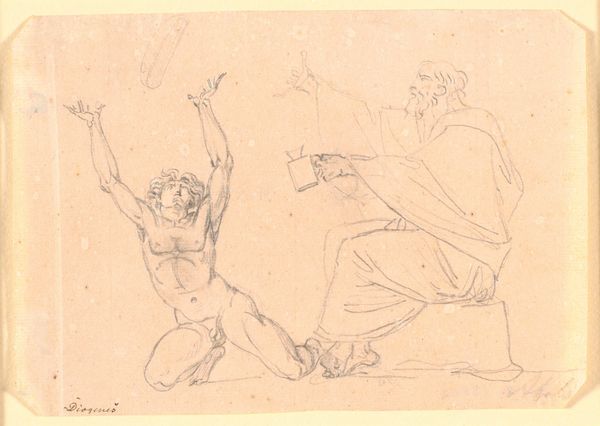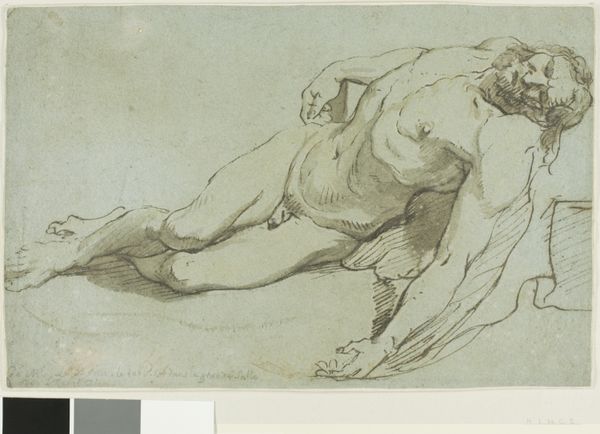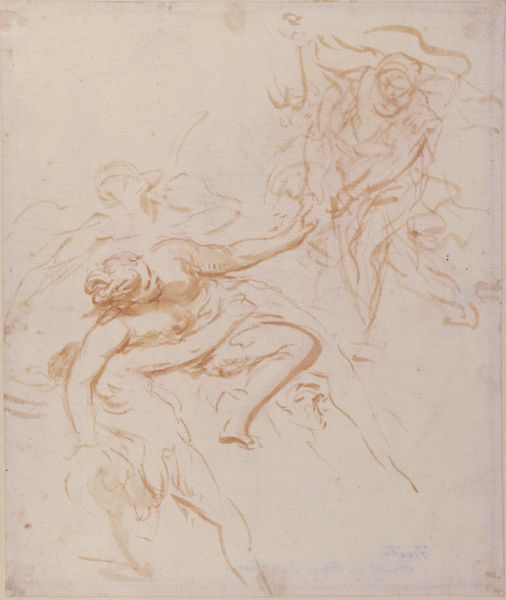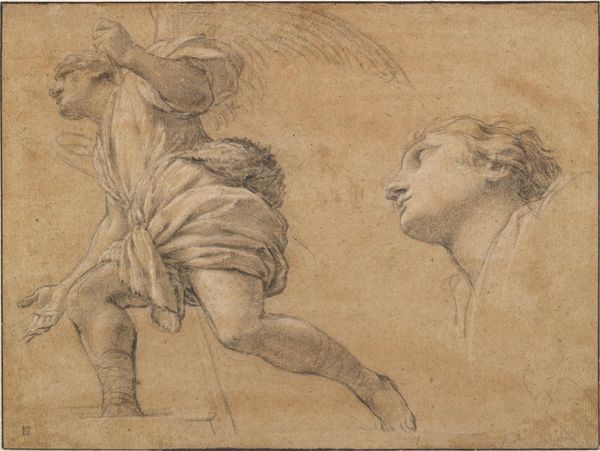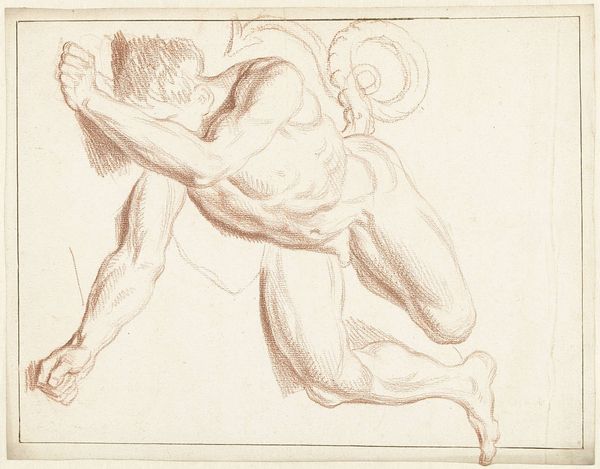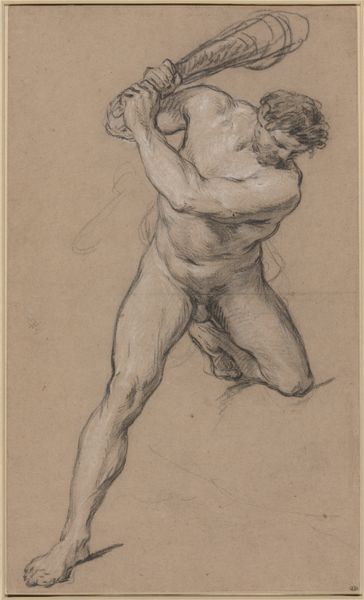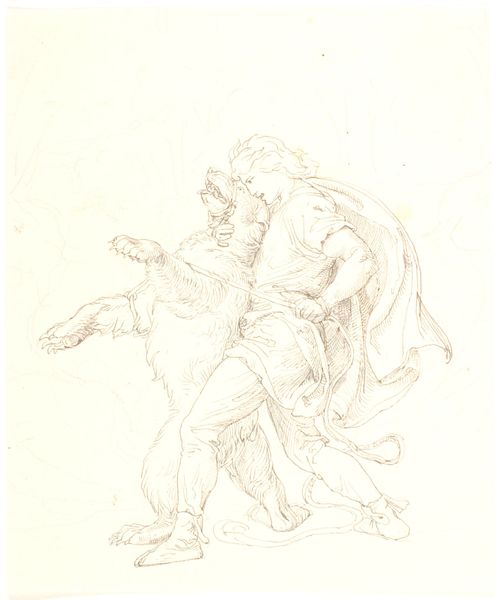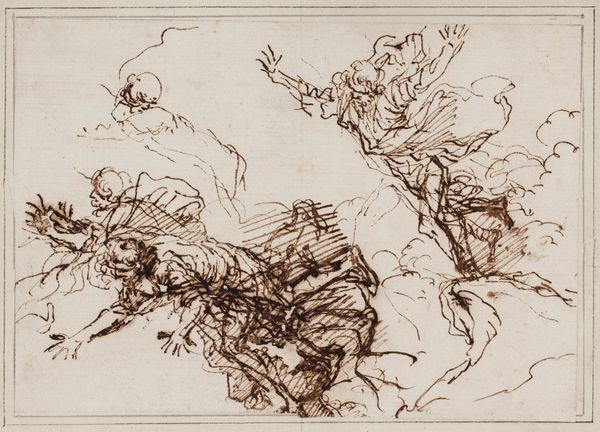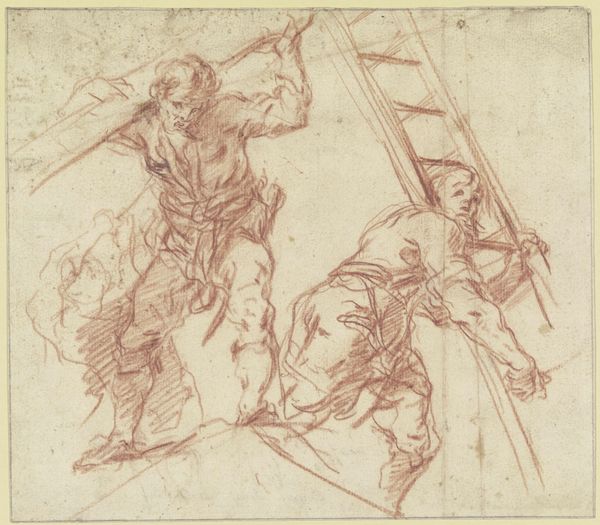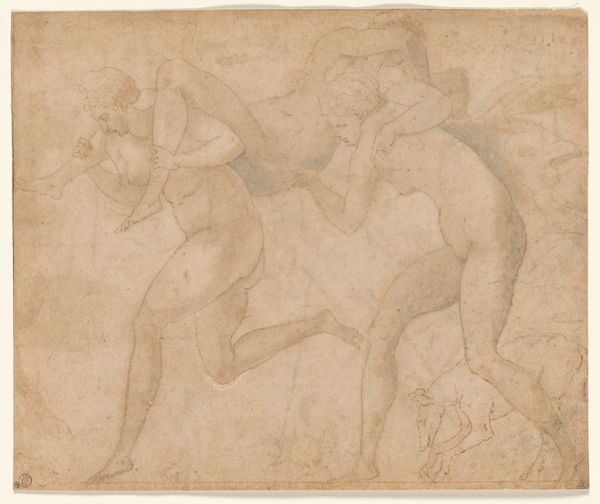
Studie nach Raffaels _Vertreibung Heliodors aus dem Tempel_ sowie weibliche Figuren c. 1512 - 1514
0:00
0:00
drawing, gouache, pencil, chalk, graphite
#
portrait
#
drawing
#
gouache
#
pencil sketch
#
figuration
#
11_renaissance
#
pencil drawing
#
classicism
#
underpainting
#
pencil
#
13_16th-century
#
chalk
#
graphite
#
14_17th-century
#
history-painting
#
watercolor
Copyright: Public Domain
Curator: This pencil and chalk drawing is titled _Studie nach Raffaels Vertreibung Heliodors aus dem Tempel sowie weibliche Figuren_, and was created by Nicolas Poussin between 1512 and 1514. Editor: My first impression is one of dynamism and subdued power. The figures are caught in moments of extreme exertion, but the muted tones create a strange quietness, a moment caught before the storm. Curator: Indeed, we see Poussin engaging with Raphael’s fresco, “The Expulsion of Heliodorus from the Temple." Poussin's act of studying Raphael’s work speaks volumes. It's a dialogue across time, an echo of artistic lineage, especially given the subject matter, which references divine intervention and the purification of sacred space. It really highlights the enduring impact that classical compositions can have. Editor: It's a shame he reproduced that same symbolic violence. Given its depiction of authority forcibly removing someone deemed unworthy from a holy place, do you think this relates to themes of religious or cultural supremacy that were circulating at the time? Who does that kind of symbolism really serve? Curator: I can see your concern, but in its historical context, this can also speak to broader struggles for justice, even if the symbolism is problematic for modern viewers. I'd suggest Poussin uses the original fresco as a template for understanding compositional rhythm. Look at how the dramatic tension is created with these bold diagonal lines, like invisible vectors of force, but more subtle, since these preliminary figures lack a distinctive location. The layering of these figures suggests the artist's quest to fully conceptualize how forces impact one another. Editor: I see what you mean about composition. There is almost a choreographer-like way he moves the figures. But I feel that, stripped of Raphael's narrative, the raw physical action becomes almost abstracted, leaving questions about authority and its expression through violence more in focus. That focus on brute action could have a potentially empowering reading, but I do wish there was space given for alternative readings that were not so closely tied to religion. Curator: Perhaps Poussin sought an ideal form by synthesizing and reworking a renowned masterpiece. It also illustrates a fascinating interplay of appropriation, influence, and reinterpretation across the ages. Thank you for this discussion; it enriched our view on this compelling image. Editor: Likewise; considering the role of art in perpetuating power is always valuable, especially when we view older pieces.
Comments
No comments
Be the first to comment and join the conversation on the ultimate creative platform.
